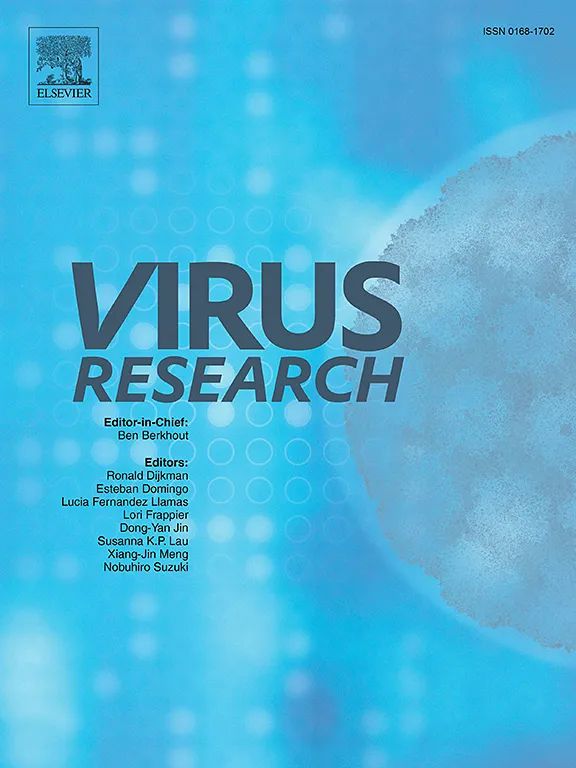Preparation and pharmacokinetic evaluation of Staphylococcus phage COP-80B for treatment of periprosthetic joint infections in a mouse model
IF 2.7
4区 医学
Q3 VIROLOGY
引用次数: 0
Abstract
Phage therapy has recently attracted significant attention as a potential treatment for periprosthetic joint infections, yielding promising outcomes in several compassionate use cases. The absence of standardized treatment protocols is partly attributable to insufficient pharmacokinetic data regarding relevant phage administration routes and dosages. Another neglected aspect is the scalable manufacturing of pharmaceutical-grade phage preparations for preclinical testing. In this study, we address both challenges and present a scalable phage production process for the Staphylococcus epidermidis-specific phage COP-80B We prepared a highly purified phage suspension, as verified through qPCR, HPLC, NTA and short-read sequencing, which was used in a preclinical pharmacokinetic study in an uninfected mice model. Using a plaque assay, we determined phage concentrations in mouse organs over time after intraperitoneal and intra-articular application of 109 phages. Intra-articularly administered phages persisted in the periarticular tissue for several days, entered the systemic circulation and were subsequently cleared from the liver and spleen. Conversely, intraperitoneally administered phages did not reach the intra-articular space. No adverse events and no changes in hematological parameters were observed in mice after phage application by either route, confirming the safety of a single-dose application. Our results emphasize the importance of local phage administration for sustained presence in periarticular tissue and provide valuable pharmacokinetic data to support the development of optimized treatment protocols for periprosthetic joint infections.
噬菌体葡萄球菌COP-80B治疗小鼠假体周围关节感染的制备及药动学评价
噬菌体治疗作为一种潜在的治疗假体周围关节感染的方法最近引起了人们的极大关注,在一些富有同情心的用例中产生了有希望的结果。缺乏标准化治疗方案的部分原因是有关噬菌体给药途径和剂量的药代动力学数据不足。另一个被忽视的方面是用于临床前测试的药物级噬菌体制剂的规模化生产。在这项研究中,我们解决了这两个挑战,并提出了一种可扩展的表皮葡萄球菌特异性噬菌体COP-80B的噬菌体生产工艺。我们制备了高度纯化的噬菌体悬浮液,经qPCR、HPLC、NTA和短读测序验证,用于未感染小鼠模型的临床前药代动力学研究。使用斑块测定法,我们在腹腔和关节内应用109个噬菌体后,测定了小鼠器官中随时间的噬菌体浓度。关节内给药的噬菌体在关节周围组织中持续数天,进入体循环,随后从肝脏和脾脏中清除。相反,腹腔注射噬菌体不能到达关节内间隙。两种给药方式均未观察到小鼠的不良反应和血液学参数变化,证实了单剂量给药的安全性。我们的研究结果强调了局部噬菌体给药对于关节周围组织持续存在的重要性,并提供了有价值的药代动力学数据,以支持假体周围关节感染的优化治疗方案的发展。
本文章由计算机程序翻译,如有差异,请以英文原文为准。
求助全文
约1分钟内获得全文
求助全文
来源期刊

Virus research
医学-病毒学
CiteScore
9.50
自引率
2.00%
发文量
239
审稿时长
43 days
期刊介绍:
Virus Research provides a means of fast publication for original papers on fundamental research in virology. Contributions on new developments concerning virus structure, replication, pathogenesis and evolution are encouraged. These include reports describing virus morphology, the function and antigenic analysis of virus structural components, virus genome structure and expression, analysis on virus replication processes, virus evolution in connection with antiviral interventions, effects of viruses on their host cells, particularly on the immune system, and the pathogenesis of virus infections, including oncogene activation and transduction.
 求助内容:
求助内容: 应助结果提醒方式:
应助结果提醒方式:


